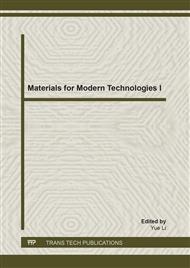p.15
p.21
p.27
p.33
p.39
p.45
p.51
p.57
p.61
Computational Results Show Gas Phase Reactions Have Great Impact on the Deposition Rate of Silicon in Siemens CVD Reactors
Abstract:
Over 80% of solar grade silicon is produced by using Siemens process. The chemical and physical phenomenon involved in the Siemens CVD reactors is very complex. For the purpose of finding the effect of gas phase reactions on the deposition rate of silicon in Siemens CVD reactors, four different gas phase reaction routes were applied in computational simulations using a commercial software Ansys Fluent. The simulation results show that the gas phase reaction mechanisms have great impact on the predicted Si growth rates. Specifically, the silicon growth rates decrease with an increase in HCl concentration on the rods’ surfaces with a fixed surface temperature. The formation of SiCl4, however, shows insignificant impacts on the growth rate of Si, and the surface concentration of SiCl4 is not directly associated with that of HCl.
Info:
Periodical:
Pages:
39-44
Citation:
Online since:
May 2015
Authors:
Price:
Сopyright:
© 2015 Trans Tech Publications Ltd. All Rights Reserved
Share:
Citation:


